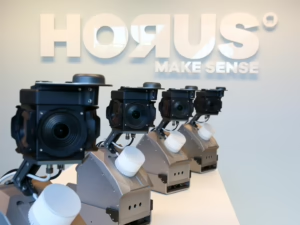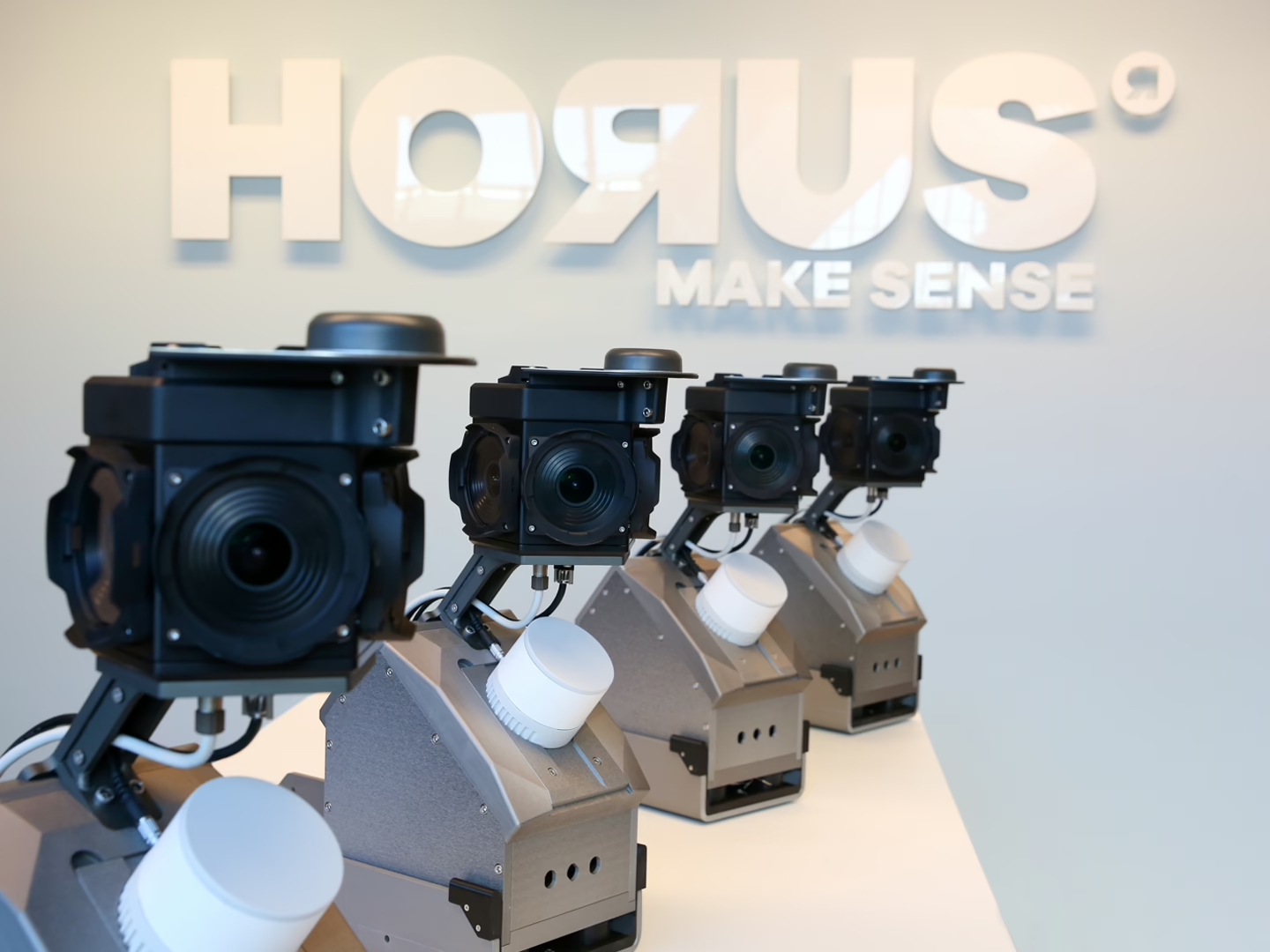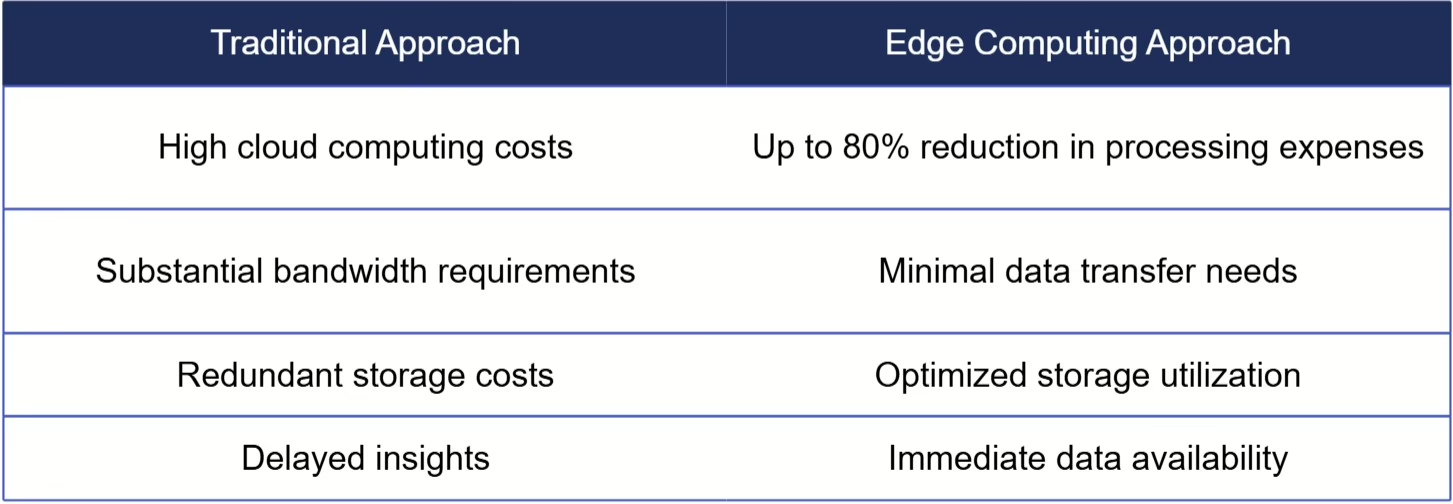
How Edge Computing Transforms Reality Capture Economics While Eliminating Data Processing Delays
- 5 min
Table of Contents
The New Paradigm in Field Data Processing
This transformative approach to data collection naturally revolutionizes enterprise data strategy for organizations ready to embrace the edge of tomorrow.
Industry research offers valuable insights on this emerging technology. According to ZPE Systems (2024), citing industry research from Gartner, reports that by 2029, 30% of enterprises will rely on edge computing as digital transformation continues to accelerate adoption.

Horus’ next generation mobile mapping system features edge computing, including TensorRT on NVIDIA powered Jetson boards.
The Hidden Crisis Facing Enterprises
Up until now, organizations have accepted the limitations of traditional cloud-based processing as inevitable. Current data collection infrastructures contain critical challenges silently undermining operational efficiency.
The issue is not simply about data volume. The issue is how organizations process that data.
The True Cost of Maintaining Status Quo
Enterprise organizations continuing with traditional cloud-centric data processing face:
- Exponentially increasing cloud processing costs as collection requirements inevitably grow
- Overwhelming bandwidth expenses that strain IT budgets
- Processing delays that compromise decision-making capabilities
- Competitive disadvantage as forward-thinking rivals adopt more efficient technologies
- Reduced collection frequency due to economic constraints
The more organizations rely on centralized cloud processing for field data collection, the more these challenges magnify across operations.
The Edge Computing Solution: Processing Where Collection Happens
Imagine shifting critical processing from centralized cloud infrastructure directly to edge devices, completely transforming field data economics. It may come as a surprise that this approach reduces mobile mapping data processing costs significantly while delivering insights faster than ever before.
ZPE Systems (2024) defines edge computing as a solution that “allows organizations to process data close to where it’s generated, with the goal of improving operational efficiency and reducing latency.”
This fundamental shift in how data processing occurs delivers practical benefits for organizations implementing the technology. This approach aligns with the growing trend toward decentralization. CIO (2024) reports that many enterprises are experiencing “cloud regret” due to “high bandwidth costs, lock-in period, performance bottlenecks and latency issues,” leading them to “repatriate workloads back to on-premises and edge infrastructure, where data is processed closer to its point of origin.”
This trend is gaining momentum, with CIO (2024) noting that an NTT Data report showed 70% of enterprises are fast-tracking edge adoption to overcome business challenges.
How Edge Computing Creates Immediate Operational Benefit
This revolutionary approach fundamentally transforms the data collection paradigm through:
- NVIDIA-powered processing allowing complex computations at the collection point
- Real-time JPEG conversion and LAS generation eliminating raw data transfer needs
- On-device image stitching preserving information value while reducing data volume
- Edge-based position correction ensuring data quality before transmission
Economic Advantages of Edge Computing
Edge computing implementation delivers measurable advantages:

Forward-thinking organizations already implement these advantages, aligning with industry observations. Research from IDC (2024) indicates that “edge is a crucial technology infrastructure that extends and innovates on the capabilities found in core datacenters,” demonstrating the transformative potential of this technology across numerous applications.
The Co-Creation Advantage:
A Path to Implementation Certainty
The co-creation methodology represents a significant shift from traditional technology implementation models. Rather than forcing organizations to adapt their workflows to pre-developed solutions, collaborative approaches center on developing systems that directly address specific operational needs while incorporating specialized engineering expertise.
This implementation philosophy aligns with current industry research. ZPE Systems’ 2024 market analysis identifies five critical factors driving edge computing adoption: edge environment diversity, accelerating digital transformation initiatives, exponential data growth, evolving business requirements, and emerging technology capabilities. A collaborative implementation process naturally addresses these factors through its structured engagement model.
Effective co-creation implementations typically include three core components:
- Comprehensive Needs Assessment: The process begins with a thorough analysis of organizational requirements, existing systems, operational workflows, and strategic objectives. This foundational understanding ensures that development efforts align with actual business needs rather than assumed requirements.
- Contextual Solution Design: Technical parameters emerge from the assessment phase, allowing for architecture decisions that integrate appropriate technologies, scalability requirements, and security frameworks based on the organization’s specific context.
- Structured Implementation Framework: A clearly defined roadmap with established milestones provides transparency throughout the deployment process, enabling regular evaluation and adjustment as implementation progresses.
As organizations increase their engagement in collaborative development processes, the resulting solutions tend to integrate more seamlessly with their unique operational environments. This approach transforms technology implementation from a disruptive event into an evolutionary process that builds institutional knowledge while delivering practical solutions.
Begin The Transformation Journey
Claiming the opportunity to transform data collection from a cost center to a strategic advantage happens through edge computing implementation. This shift enables the higher collection frequencies demanded by today’s rapidly changing environments.
IDC (2024) projects that global spending on edge computing will reach “near $378 billion by 2028, growing at a solid double-digit CAGR,” indicating the rapidly growing adoption of this technology and the importance of strategic timing for implementation.
How would organizations leverage immediate data insights if processing delays disappeared completely from workflows? The time to act is now, as the edge computing landscape continues to mature rapidly.
A modular approach allows organizations to start with targeted implementations before expanding across operations. This means capturing edge computing benefits while minimizing disruption to existing workflows.
Next Steps Toward Data Collection Excellence
- Schedule a consultation for analysis of specific requirements
- Co-create a solution designed precisely for the technical environment
- Implement a pilot program to validate performance in operational context
- Scale confidently across the enterprise as results demonstrate value
The issue is not whether to update data infrastructure. The issue is how quickly to start capturing the competitive advantages of edge computing.
Organizations remaining trapped in yesterday’s data collection paradigm fall behind as competitors advance to the edge of tomorrow. CIO (2024) reports that “about 65% of companies across more than a dozen industries use edge, and 83% of organizations say edge computing will be essential to remain competitive in the future.” Choose to transform data collection economics today.
Sources
- CIO, “2024 Was the Breakout Year for Edge Computing. What’s Next?”, December 26, 2024
- IDC, “Worldwide Spending on Edge Computing Forecast to Reach $378 Billion in 2028, Driven by Demand on Real-time Analytics, Automation, and Enhanced Customer Experiences”, September 10, 2024
- ZPE Systems, “Edge Computing Platforms: Insights from Gartner’s 2024 Market Guide”, November 11, 2024
Discover more
Related article






